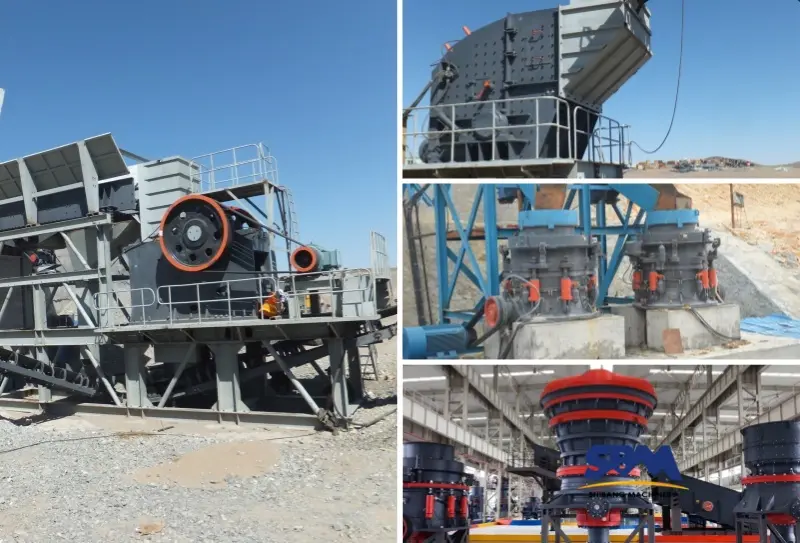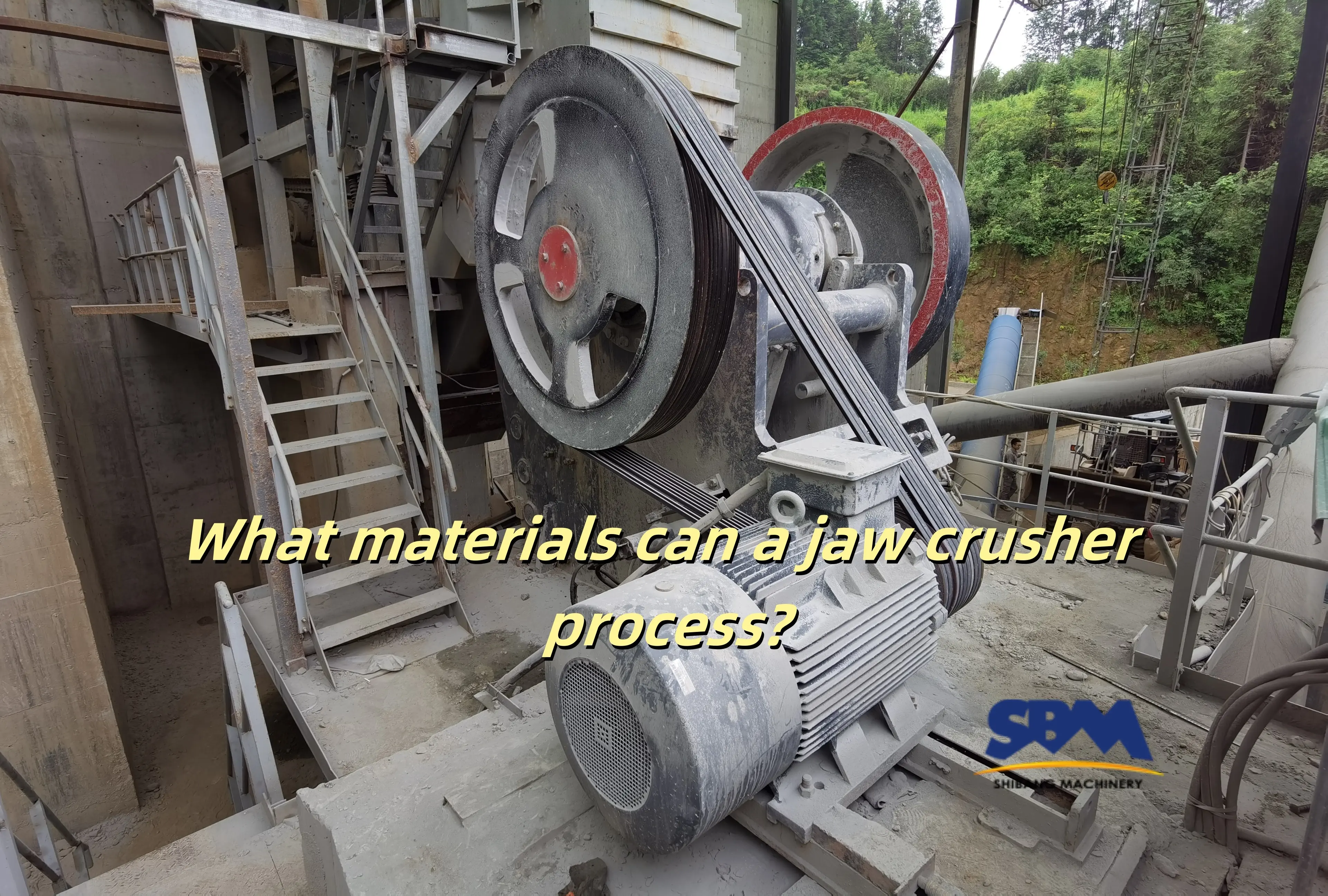ईमेल: [email protected]
What are the limitations of a jaw crusher? – एक व्यापक मार्गदर्शक
Overcoming the limitations of a jaw crusher is essential to maximize efficiency and avoid operating errors. The following will walk you through the key limitations of a jaw crusher and how to solve them.
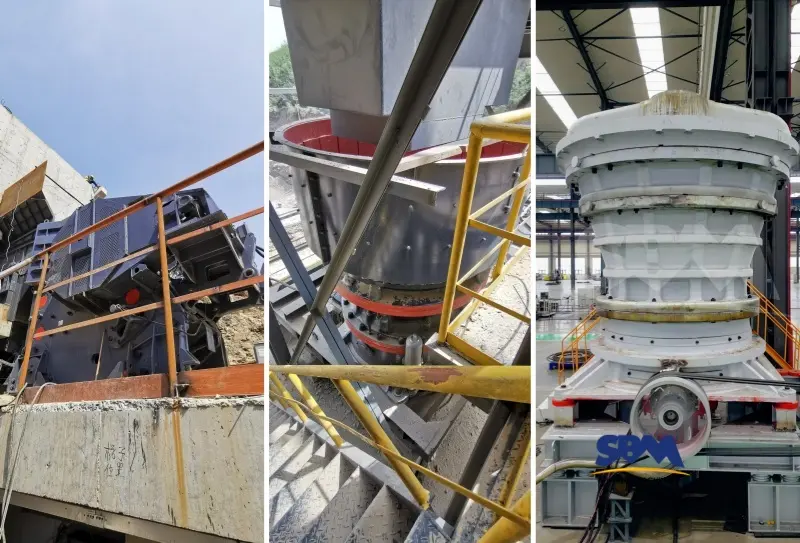
1. Material hardness and abrasiveness limitations
While adept at processing hard rocks such as quartzite, basalt and granite, jaw crushers are also subject to great challenges, such as extremely abrasive materials or materials with a compressive strength exceeding 320 MPa.
केस स्टडी: Quartzite Processing in Sweden
At LKAB’s Kiruna iron ore, standard jaw crushers were initially unable to process quartzite containing 40% abrasive feldspar. Wear plates were wearing 3 times faster than standard iron ore, resulting in replacement costs of up to 92,000 euros per month.
Solution:
- Use high manganese steel jaw plates for better wear resistance.
- Pair with secondary crushing equipment such as cone crushers for more delicate processing of hard materials.
2. Feed size and capacity limitations
If the size of the material fed into the jaw crusher exceeds the maximum range allowed by the equipment design during operation, it is easy to cause the crushing chamber to be blocked, and in serious cases, the production line will be forced to stop. Taking the PE 900×1200 model as an example, its maximum allowable feed size is 750 मिमी; while the C6X200 series has a stronger processing capacity and can accept block materials up to 1200 मिमी.
Solution:
- Install a vibrating screen to filter oversized material before feeding it into the crusher.
- Choose a larger model, such as the C6X200 series, for higher capacity (पर्यंत 1,510 टी/ता).
टिपा: you can learn more about Jaw Crusher Feeding Tips.
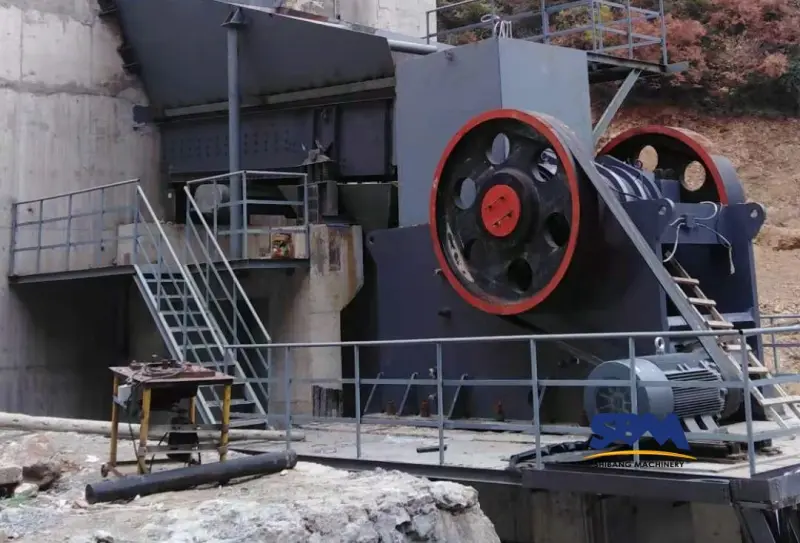
3. High maintenance and wear costs
Frequent wear of components such as toggle plates, jaw liners and bearings is a very common problem. A case study of a Brazilian limestone quarry showed that the jaw crusher required replacement of jaw crusher spare parts every 6-8 weeks due to abrasive limestone.
A case study in the Turkish construction industry showed that 40% of jaw crusher downtime was due to liner wear, and maintenance costs accounted for 15% of the operating budget. Regular lubrication and calibration checks are critical but time-consuming.
याव्यतिरिक्त, an Australian gold mine cost analysis showed that Newmont’s Boddington operation tracked a worn toggle plate, resulting in:
- 11% excess energy consumption
- 0.3 mm oversize product deviation
- Downstream screening losses of $7,200 per month
Solution:
- Implement a predictive maintenance program.
- Use an automatic lubrication system to extend bearing life
4. Energy consumption and operating costs
Traditional jaw crusher, especially early models, generally has the limitations of high energy consumption. Taking the PE 1200×1500 model as an example, its rated power is as high as 200 kilowatts, and it shows significant energy consumption characteristics during the material crushing process. Actual application cases show that in the production line transformation of a German aggregate processing plant, by replacing the traditional jaw crusher with an energy-saving impact equipment, the energy consumption in the secondary crushing link was successfully reduced by 15%, verifying the key role of equipment selection in energy efficiency optimization.
Compared with gyratory crushers, जबडा क्रशर consume more energy in material handling. उदाहरणार्थ, the crushing energy consumption of each ton of limestone in a jaw crusher is about 25%-30% higher than that of a gyratory device. This energy efficiency gap is particularly prominent in a limestone mining project in India. When the crushing equipments run continuously for more than 12 तास, its electricity consumption accounts for up to 32%-35% of the total production cost. It has become an important factor restricting operational efficiency. It is worth noting that the high energy consumption characteristics of the jaw crusher in this case are mainly due to its mechanical structure characteristics – including large friction losses and relatively low crushing chamber volume utilization.
Solution:
- Retrofit variable frequency drives (VFDs) to optimize motor efficiency.
- Compare energy usage to alternatives such as gyratory crushers for large operations.
5. Inefficient handling of wet or sticky materials
Jaw crushers do not perform well with wet or clay-rich materials, as seen in Malaysian quarries, where moisture causes frequent clogging of jaw crusher feed points. In South African coal mines, clay-rich coal seams often reduce efficiency by 20-30%, requiring the use of secondary crushers such as cone crushers to compensate.
Solution:
- Pre-dry materials or use additives to reduce moisture content. उदाहरणार्थ, install infrared pre-dryers at feed points.
- Consider using gyratory or impact crushers to handle sticky materials.
- Implement staggered crushing cycles during the monsoon season.
6. Limited control over product shape
Jaw crushers produce aggregates with uneven shapes compared to cone crushers that provide better cubicity. In a US highway project, jaw crushed aggregates required additional screening, which increased costs by 20%.
A comparative study of I-35 expansion material from a Texas highway project showed:
- Metric jaw crusher only Jaw crusher + cone crusher combination
- Cubic particles 58% 89%
- Rescreening required 3 times/day 1 time/3 days
- Total cost/cubic meter $4.20 $3.65
Solution:
- Use a jaw crusher for primary crushing and pair it with a cone crusher for secondary shaping.
- Operational Challenges in Global Case Studies
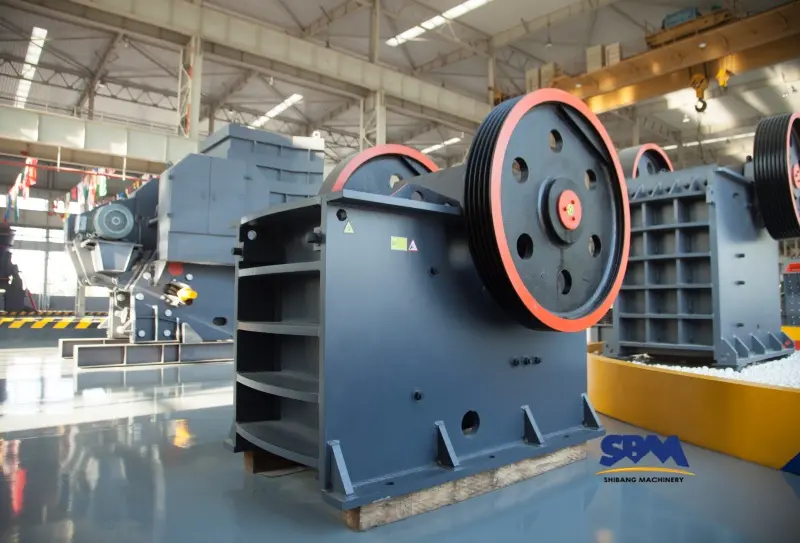
Special Cases
Case 1: South African Iron Ore
A medium-sized mine faced frequent blockages due to the abrasive nature of high-iron laterite ore. Switching to a PE jaw crusher with a reinforced liner improved durability but increased maintenance frequency. The solution was a hybrid system that paired a jaw crusher with a cone crusher for primary crushing, followed by secondary processing.
Case 2: Australian quarry
In New South Wales, a quarry struggled with fluctuating feed sizes from open-pit mining. Installing a vibrating feeder with adjustable settings optimized material flow and reduced jaw crusher overload incidents by 25%.
Case 3: European recycling facility
A German plant encountered metal contamination when processing construction waste. Integrating an eddy current separator upstream of the jaw crusher reduced equipment damage by 60%, highlighting the importance of pre-treatment.
Comparing Jaw Crushers to Alternatives
| घटक | Jaw Crushers | Gyratory Crushers |
|---|---|---|
| Feed Size | Limited (पर्यंत 1200 मिमी) | Large (पर्यंत 1525 मिमी) |
| क्षमता | High (पर्यंत 1,510 t/hr) | High (पर्यंत 1,525 t/hr) |
| Maintenance | Frequent liner replacement | Reduced wear due to larger crushing area |
| Energy Consumption | Higher | Lower |
For operations where scalability is a priority, a gyratory crusher may be preferable, but a jaw crusher is still cost-effective for smaller or mobile setups.
Optimizing Jaw Crushers Performance
Prescreening: Use vibrating screens to remove oversized material before crushing.
Liner Selection: Choose cone liners in high-wear environments.
Regular Maintenance: Schedule alignment checks and lubrication to minimize downtime.
Hybrid Systems: Pair with a cone crusher for secondary processing to increase efficiency.
In summary, जबडा क्रशर, as the core equipment of primary crushing, is irreplaceable in the field of mineral processing. Although jaw crusher has limitations such as limited material adaptability, high operation and maintenance costs, and energy consumption pressure, it can effectively break through the application boundaries through systematic technical optimization. If you need customized spare parts selection guidance or feeding system optimization solutions, we can provide overall solutions covering equipment selection, process layout and energy efficiency optimization based on material characteristics (such as hardness ≤320MPa, maximum block size ≤1200mm) and production capacity requirements (30-1000टी/ता).
मुख्यालय कार्यालय
Whatsapp:+8615225176731
ईमेल: [email protected]
पत्ता: नाही. 1688, गावके पूर्व रस्ता, पुडोंग नवीन जिल्हा, शांघाय, चीन.
संकेतस्थळ: https://www.mill-sbm.com/
लेखातील सामग्री
अलीकडील पोस्ट
- How Does Jaw Crusher VS. Other Primary Crushing Equipment?From Australia’s iron ore belts to Canada’s oil sands, jaw crusher and (or vs.) other primary crushing equipment determines operational success. While gyratory and impact crushers have niche roles, jaw…
- What are the limitations of a jaw crusher? – एक व्यापक मार्गदर्शकOvercoming the limitations of a jaw crusher is essential to maximize efficiency and avoid operating errors. The following will walk you through the key limitations of a jaw crusher and…
- Beyond Rocks: The Surprising Materials Jaw Crushers Can ProcessWhile “रॉक क्रशर” might conjure images of granite mountains, new jaw crushers process materials that would surprise even seasoned engineers. Let’s examine their true capabilities through global operational data and…

